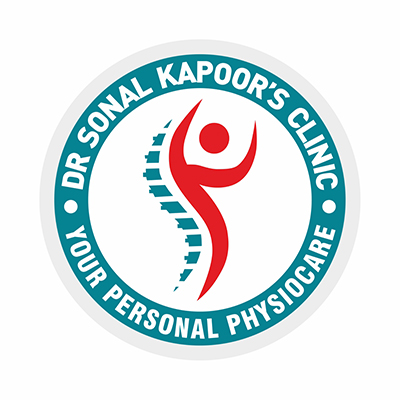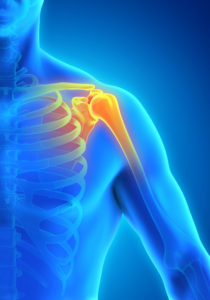At Dr. Sonal Kapoor Physiotherapy Clinic, we care for you, we care for your thoughts, emotions and relationships… THE RESULT YOU WANT. THE CARE YOU DESERVE.
Sport injury rehabilitation effectively treat pain of athletes and return to normal function. The main purpose of sport rehabilitation is to help the injured tissues recover in a controlled and supervised manner. Sport injury rehabilitation treats range of condition including acute sports injury, strain, sprains, muscle, tendon and ligament repairs, tendonitis, hand injuries etc.
Unfortunately, one of the downsides of sport is a sports injury, this occur relatively infrequently so the health and psychological benefits of participating in sport far outweigh the potential temporary downside of a sports injury. Sport injury is not something which should be taken normally, so it should be accurately diagnose and optimally manage in the shortest possible time. Sports Injury Includes Rotator Cuff Tear, Tennis elbow, Golfer’s Elbow, anterior cruciate ligament, ankle sprain etc.
ROTATOR CUFF TEAR
Rotator Cuff Tear is the most common injury especially in sports like baseball or tennis or in some jobs like painting or cleaning windows. The rotator cuff tear is a group of four muscles that come together as tendons to form a “cuff” over the head of the humerus. The rotator cuff helps to lift and rotate the arm and stabilise the ball of the shoulder within joints.
SYMPTOMS:
- Experience acute pain.
- Snapping sensation
- Immediate weakness of the arm
- Difficulty with routine activities
TREATMENTS:
Your physiotherapist will start with a combination of physical therapy to make your shoulder muscles stronger.
TENNIS ELBOW:
Tennis elbow usually occurs when tendons in your elbow are overloaded by repetitive motion of the wrist and arm. This leads to pain and tenderness on the outside of the elbow. It’s not that the athletes are the only people who develop tennis elbow problems. People whose jobs feature the types of motion that leads to tennis elbow are plumbers, painters, carpenters and butchers.
SYMPTOMS:
The symptoms of Tennis elbow include pain and tenderness in the bony knob. It may cause most pain when you:
- Raise your hand or straighten your wrist
- Lift something
- Make a first or grip an object, such as tennis racket open a door or shake hands
CAUSES:
The main cause of tennis elbow is an overuse and muscle strain injury. The repetitive stress and motions to the tissue may result in a series of tiny tears in the tendons that attach the forearm muscles to the bony prominence at the outside of your elbow.
- Knitting
- Painting
- Typing
- Weight lifting
- Tennis Squash
GOLFER’S ELBOW:
Golfer’s Elbow is a condition that causes pain where the tendons of your forearm muscles attach to the bony bump on the inside of your elbow. It is in some ways similar to tennis elbow which affects the outside at the lateral epicondyle. Rest and appropriate treatment can get back into the swing of things.
SYMPTOMS:
- Pain and tenderness
- Stiffness
- Weakness
- Number and tingling
- Morning stiffness
CAUSES:
Golfer’s Elbow is mainly caused by damage to the muscles and tendons that control your wrist and fingers. The damage is typically related to excess or repeated stress . Especially forceful wrist and finger motions. Improper lifting, throwing or hitting as well as too little warm-up or poor conditioning also can contribute to Golfer’s Elbow. The main activities that lead to Golfer’s elbow include:
- Golf Racket sports throwing
- Sport Weight training
ANTERIOR CRUCIATE LIGAMENT INJURIES (ACL):
One of the most common knee injuries is an anterior cruciate ligament sprain or tear. Athletes who participate in high demand sports like soccer, football, and basketball are more likely to injure their anterior cruciate ligaments.
If you have injured your anterior cruciate ligament, you may require surgery to regain full function of your knee. This will depend on several factors such as the severity of your injury and your activity level.
SYMPTOMS:
- Large effusion / Haemarthrosis
- Restricted movement
- Loss of extension
- Widespread Tenderness
- Most complete tears are extremely painful
- Initially unable to continue the activity
PCL (POSTERIOR CRUCIATE LIGAMENT INJURY)
The posterior cruciate ligament is located in the back of the knee. It is one of several ligaments that connect the femur (thighbone) to the tibia (shinbone). The posterior cruciate ligament keeps the tibia from moving backwards too far.
An injury to the posterior cruciate ligament requires a powerful force. A common cause of injury is a bent knee hitting a dashboard in a car accident or a football player falling on a knee that is bent. Incidence rate of PCL tear is about 1.8 times higher in males. PCL Tear occurs at times with meniscal and articular cartilage injury.
SYMPTOMS:
- Most complete tears are extremely painful
- Swelling (mild to severe)Knee PainWobbly sensation in the knee
- Initially unable to continue the activity
- Large effusion /haemarthrosis Widespread Tenderness Over time, PCL can lead to Osteoarthritis in the Knee
- Trouble in walking
ANKLE SPRAIN/ STRAIN:
The sprain can occur when the ankle is forced beyond its normal range of motion. An ankle sprain is a common acute injury, with over 25,000 people in different countries it each day. It can affect adults and children, athletes and non-athletes and can occur as a result of playing vigorous sports or simply taking a bad step off a curb.
An ankle strain is an injury that occurs when ankle muscles and/or their connecting tendons are either stretched beyond their normal limits or torn outright. Strains may be acute or chronic. The muscular injury often occurs at the point where the muscle connects to a tendon.
SYMPTOMS:
- Pain
- Muscle spasms
- Limited ability to move the affected muscle
CAUSES:
- Swelling
- Slipping on iceRunning,
- Jumping or throwing
- Lifting a heavy object or lifting in an awkward position
HOW PHYSIOTHERAPY HELPS:
- Improves pain through advanced modalities
- Reduces inflammation
- Reduces spasm
- P- Protection, R- Rest, I-Ice, C- Compression, E-Elevation Physiotherapy Assessment Stabilisation,
- Precautions and Home Programme
- Pain Management with Advanced Modalities
- Reduces inflammation, Swelling, Oedema
Apart from basic Sports Injury, Dr. Sonal Kapoor Physiotherapy Clinic provides other treatments as well.



